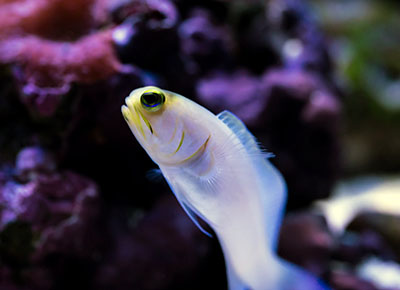Next year, our daughter will be heading off to college and our son will already be well on the way through his senior year at OSU. With two kids almost down and none to go, my wife, Melissa, and I will soon (more or less) be empty-nesters. It also means we’ll soon be selling our two-story, four-bedroom home and moving into something better suited to a twosome and a few occasional visitors.
Of course, talk of downsizing our house has led to several discussions of downsizing my 125-gallon aquarium to something more manageable and what form of setup that might take. Below are just a few of the ideas I’m mulling over. If you happen to find yourself in a similar situation—or you’d just like to take on a different sort of hobby challenge—you might want to give one of these setups a try as well.
1. A nano reef
I’ll lead with the most obvious option: a nano reef. Generally described as a reef system smaller than 30 gallons, a nano reef can fit in virtually any living space with room to spare.
As I’ve pointed out in various posts in the past, the biggest challenge of nano systems is their greater instability when it comes to temperature and other water parameters relative to tanks holding larger volumes of water. Of course, the confined space also significantly limits the number and size of specimens you can keep and presents special issues when it comes to specimen compatibility.
Nonetheless, the burgeoning interest in nano tanks has led to the development of all manner of nano-appropriate gear, making this facet of the hobby more accessible and achievable than ever before.
2. A single-specimen oddity tank
Here I’m thinking along the lines of an Antennarius sp. frogfish (such as Antennarius striatus). I’ve always been a huge fan of these odd little anglers, which are unrivaled when it comes to camouflage and boast amazing anatomical adaptations that they use to lure prey. They also don’t need a great deal of swimming space, so perhaps a 30-gallon tank housing one of these cryptic characters or a similarly sized oddball would fit the bill.
3. A yellowhead jawfish colony
I know, I know, I’ve brought this idea up about a thousand times but haven’t gone through with it yet. Perhaps that will change with our future move and I’ll finally set up my Opistognathus aurifrons colony. Granted, I would need a tank of at least about 40 gallons with a relatively wide footprint (i.e. a breeder tank) along with a deep, mixed-particle-size sand bed for a small colony, but that would still represent a decent downsizing from my current 125-gallon.
4. A seahorse system
One of my wife’s suggestions is a small tank dedicated to a group of captive-bred seahorses, specifically dwarf seahorses (Hippocampus zosterae). I’m not sure how I feel about this, as these little critters pack a lot of demands into a very small package, but H. zosterae can certainly be kept in very small systems and would be a good option for a dedicated, experienced hobbyist who’s up to meeting these demands (i.e., providing a constant supply of small live foods in the proper concentration, exceptional and stable water parameters, etc.).
5. A clownfish/BTA tank
A tank dedicated to Entacmaea quadricolor (the bubble-tip anemone, or BTA) and a pair of one of the many clownfish species that it’s known to host would make for a fascinating, manageably sized display. As with the jawfish colony, I couldn’t do this in a nano system, but I could get by with, say, a 40-gallon breeder. What could be more iconic?
What would you do?
As always, fellow salties, I’d love to hear any suggestions you might have. So what setup would you choose in my situation?



